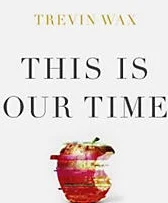An Awesome Adventure in Science---For Kids
There are few things more endearing to the heart of a homeschooling parent than seeing a child sprawled on the floor, elbows propped, nose in a book. This is especially true when that book was specially selected and secretly planted on the shelf to impart knowledge as well as entertain.
There is nothing wrong with reading many novels and short stories, but talking animals, heroes fighting dragons, and school stories are insufficient fare on their own for the long-term growth of a budding mind. In addition, we have made efforts to sneak in history books with full color illustrations and encyclopedia-style presentations. This is an easy way to get kids up to speed on some of the humanities.
Science, however, is a much more difficult topic to sneak on the shelves and present as interesting. I’m not talking about books that get kids interested in the idea of science—there are plenty of novels that do that. But a book that presents vital scientific concepts in an original, interesting, and attention grabbing way at the level the kids can receive it can be hard to find.
I’ve previously reviewed a fun book, Thing Explainer, that provides an entry point into understanding how things work. That has gotten my son interested in inventing things, but he lacks the fundamental understanding of concepts to begin to understand why his proposed ideas are physically impossible. I’ve struggled to find ways to explain the physical limitations of the universe to him. Somehow teaching adults about nuclear power didn’t equip me to teach a first grader about quantum physics.
One excellent answer to this conundrum is a set of books by physicist Dominic Walliman. One title is Professor Astro Cat’s Frontiers of Space that was released in 2013. More recently, Walliman and his illustrator/co-author, Ben Newman, have released Professor Astro Cat’s Atomic Adventure. I’ve read both and both are worth your time and money.
Review
Professor Astro Cat's Atomic Adventure is a book about physics. Walliman’s volume explains concepts like gravity, basic material composition, and some of the beginnings of Newtonian physics. This is a book that presents basic topics in physics in terms that my son can understand. It has led to discussions about what “F = ma” means. I’ve needed to provide examples of acceleration.
Some of the concepts presented in the book are clearly beyond what my first grader can grasp at this point. However, that’s ok. Walliman and Newman have conspired to present the basic facts of physics in a way that is graphically appealing and draws a child in. While my son may not grasp why quantum tunneling matters (yes, this is a topic in the book) or how it works, he will at least have in his memory bank a basic understanding of the word and what it means so that in high school he can begin that topic with a baseline. Especially at a young age, comprehension is less a goal that awareness and acceptance of brute facts.
Atomic Adventure has opened up a number of fun conversations. Sometimes I’ll get blindsided by a question about physics and have to ask what my son has been reading. And, sometimes I have to admit that my own knowledge on a particular topic is fairly limited. But that is part of the learning experience and creating a healthy curiosity in kids. I have found the books fun to flip through, even as an adult.
One key to making this presentation of physics accessible and valuable is that the authors regularly point to applications of the physical concepts. For example, buoyancy is explained in clear terms, and then the ballast system of a submarine is used as a practical example. The authors do take a pot shot at nuclear power later in the book, but they explain the concepts remarkably well on a level children can understand.
Along with the books, the publisher has also produced an activity book that encourages children to explore science through a series of games, experiments, and thinking exercises. The activity book is consumable, which makes it somewhat expensive for what it does, but the exercises in the book could expand a science curriculum, fill a long summer afternoon, and encourage exploration by a curious child. Some contact paper could make the activity book reusable or the activities could simply be done on a separate paper so that multiple children can benefit from the resource.
If you are looking to add to your arsenal of stealth educational books, the Professor Astro Cat series is a good way to do that. This is an example of educational science enrichment done well.
NOTE: I received a gratis copy of this book from the publisher with no expectation of a positive review.




























